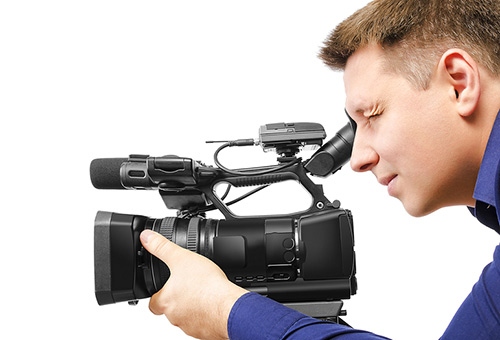Understanding the Relevance of Videography in Legal Proceedings
The integration of videography right into lawful process has actually emerged as a considerable variable in the presentation and analysis of evidence. By capturing visual components such as body language and facial expressions, videography improves the narrative surrounding witness testaments and can profoundly affect court perceptions.
Duty of Videography forthcoming
Videography plays a significantly vital function in lawful process, acting as a powerful medium for presenting evidence. The combination of video recordings into the lawful structure enables a much more dynamic representation of realities, allowing jurors and judges to picture occasions as they transpired. This visual documentation can encompass a range of materials, including surveillance video footage, tape-recorded witness testaments, and specialist demos, all of which can considerably enhance the evidentiary landscape.
One of the key advantages of videography is its capability to catch nuances that might be shed in composed accounts. Faces, body movement, and situational context can offer important insights, aiding to share emotions and purposes that text alone can not. The usage of video clip evidence cultivates an extra appealing court room experience, potentially helping jurors in understanding complicated instances.
As innovation advances, the top quality and availability of videographic proof have improved, making it an integral component of modern-day legal techniques. Courts significantly acknowledge the value of video as a dependable resource of information, motivating legal specialists to adapt their strategies for evidence discussion. Eventually, videography offers not only to illustrate facts but additionally to enhance the overall integrity of the judicial procedure.

Enhancing Credibility and Clearness
A considerable benefit of integrating videography in lawful proceedings is its ability to improve both reliability and clarity of proof provided in court. Videographic proof can catch nuances that created documents might neglect, such as tone, body movement, and context. This graph allows courts and courts to better understand the circumstances bordering the instance, thereby promoting a much more precise understanding of the occasions concerned.

Furthermore, the quality paid for by videography lowers the probability of misinterpretation that can emerge from textual summaries. This precision is specifically essential in complicated situations, where information can be quickly misinterpreted. Inevitably, by presenting evidence in an aesthetically obtainable format, videography not just strengthens the integrity of the judicial process but likewise sustains educated decision-making by those associated with lawful proceedings.
Influence On Jury Assumption
The inclusion of videographic evidence substantially affects court perception, typically leading to much more involved and educated considerations. Jurors are usually extra responsive to aesthetic information, which can improve their understanding of intricate instances. Videography provides facts in a fashion that is both obtainable and engaging, enabling jurors to link with the evidence on a more personal level.
Moreover, the capacity to witness occasions as they took place can stimulate psychological actions that written transcripts or verbal statements might stop working to evoke. This psychological engagement can lead jurors to create stronger opinions relating to the integrity of witnesses and the general story of the situation. The aesthetic representation of evidence additionally aids in clarifying ambiguities, making it easier for jurors to realize the context and significance of the information presented.
In addition, videography can serve as a powerful device for narration, allowing attorneys to build a convincing story that reverberates with the court. When jurors can picture scenarios and witness essential moments, their ability to deliberate attentively and reach an educated verdict is significantly enhanced, inevitably impacting the result of lawful proceedings.
Ideal Practices for Legal Videography
Implementing finest practices in lawful videography is important for ensuring that aesthetic proof is both efficient and reputable in the courtroom. Choose certified professionals who specialize in legal videography view website to make sure the technological top quality of the recordings. This includes utilizing high-resolution electronic cameras and professional audio tools to capture clear visuals and noise.
2nd, maintain appropriate paperwork throughout the recording process. This entails creating a comprehensive log that includes timestamps, summaries of the web content, and the identities of all individuals present. Such paperwork can bolster the credibility of the video clip.

In addition, consider making use of ideal editing methods. While it is vital to preserve the original content, minor modifications for clearness-- such as improving audio levels-- can improve the overall presentation without altering the substance.
Future Trends in Legal Videography
As legal videography remains to progress, arising modern technologies and methods are shaping the future landscape of visual evidence in the court (Legal Videography). One considerable fad is the integration of high-def and 4K video clip high quality, improving the clarity and detail of videotaped testimonies and evidence. This enhanced resolution aids jurors in thoroughly evaluating the trustworthiness of witnesses and the nuances of today products
Furthermore, the use of expert system (AI) in video analysis is acquiring grip. AI tools can assist in recognizing vital minutes in footage, creating records, and even examining non-verbal communication, which provides much deeper understandings into witness trustworthiness. Additionally, virtual fact (VR) and enhanced fact (AR) are poised to revolutionize just how evidence is presented, permitting jurors to immerse themselves in crime scenes or circumstances, therefore cultivating a more extensive understanding of the context.
Verdict
In summary, videography functions as an essential device in legal procedures, enhancing the presentation of proof and enriching the general understanding of instances. By catching non-verbal cues and strengthening the reputation of witness accounts, videography significantly influences court assumption and decision-making procedures - Legal Videography. Following ideal methods makes certain the effectiveness of legal videography, while emerging trends guarantee to additional boost its duty in the judicial system, ultimately fostering a much more educated and involved lawful setting
Videography plays a significantly critical role in lawful process, offering as an effective tool for offering proof.A substantial benefit of including videography in lawful process is its ability to boost both reputation and clarity of proof provided in court. Eventually, by providing evidence in an aesthetically obtainable format, videography not just strengthens the honesty of the judicial procedure yet additionally sustains enlightened decision-making by those entailed in lawful procedures.
In summary, videography serves as an essential tool in legal process, improving the presentation of evidence and click to find out more enhancing the overall from this source understanding of instances. Legal Videography. Sticking to ideal methods guarantees the effectiveness of legal videography, while arising patterns promise to more increase its function in the judicial system, ultimately cultivating a much more informed and involved legal environment
Comments on “How Legal Videography Supports Lawyers in Providing Stronger Instances”